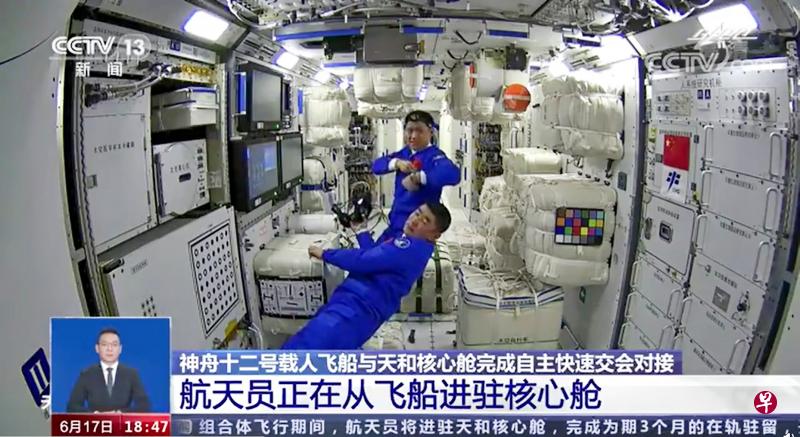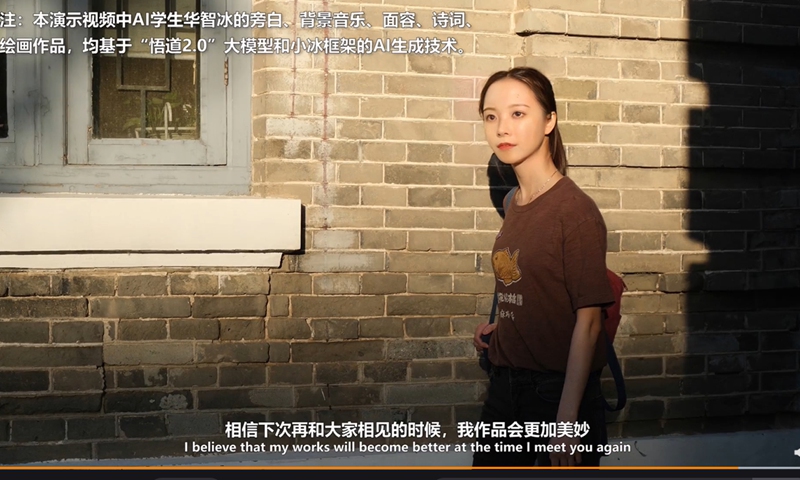中国航天员首次进入自己空间站 专家:标志着中国已成太空领域有实力新玩家
来自 / 联合早报 | 文 / 于泽远
6/17/2021

专家指出,建设有人照料的空间站具有极高的门槛和难度,此前只有苏联(俄罗斯)和美国跨过这道门槛。中国三名航天员正式进驻自主研发的空间站,标志着中国已成为这一高科技领域有实力的新玩家。
中国昨天上午用长征二号F运载火箭将神舟十二号载人飞船送入预定轨道,顺利将聂海胜、刘伯明、汤洪波三名航天员送入太空。昨天下午,神舟十二号飞船与中国空间站天和核心舱自主对接成功,三名宇航员随后进入天和核心舱,开始为期三个月的在轨驻留。
有专家指出,建设有人照料的空间站具有极高的门槛和难度,此前只有苏联(俄罗斯)和美国跨过这道门槛。中国三名航天员正式进驻自主研发的空间站,标志着中国已成为这一高科技领域有实力的新玩家。
中国央视昨天对神舟十二号飞船的发射和对接进行了现场直播。三名航天员在发射过程中神态安祥,对镜头做出一切顺利的手势;对接前,指令长聂海胜不时与北京航天飞控中心的地面工作人员对话。
中国载人航天工程办公室主任助理季启明介绍,三名航天员在轨期间将主要完成四个方面的工作:开展核心舱组合体的日常管理,包括天和核心舱在轨测试、再生生保系统验证、机械臂测试与操作训练等;开展两次出舱活动及舱外作业,包括舱外服在轨转移、组装、测试等工作;开展空间科学实验和技术试验。进行空间应用任务实验设备的组装和测试,按程序开展空间应用、航天医学领域等试验;进行航天员自身的健康管理。
从1999年开始,中国通过神舟一号到神舟四号实现了天地往返的无人验证,神舟五号搭载航天员杨利伟实现载人天地往返,神舟六号实现多人多天天地往返活动,神舟七号实现航天员出舱活动,神舟八号到神舟十号突破了无人交会对接和有人交会对接,神舟十一号实现了航天员的中期驻留。
与五年前发射的神舟十一号相比,神舟十二号的性能、保障和作业能力都有大幅提高。

神舟十二号飞船增加了自助快速交会对接功能,大大缩短了航天员在对接空间站前的等待时间。此前,神舟十一号飞船与天宫二号的对接需要等待两天,飞船需要不断调整轨道才达到最佳对接状态。而神舟十二号飞船昨天只用了6小时30分,就完成了与天和核心舱交会对接。
神舟十一号曾创造33天在轨工作时间记录,而神舟十二号的设计飞行寿命已大幅增加到180天,可以满足未来空间站稳定运行阶段半年一次的航天员轮换频率。
今年和明年将接续 实施11次飞行任务
中国今年和明年将接续实施11次飞行任务,包括三次空间站舱段发射,四次货运飞船以及四次载人飞船发射,以完成全部空间站建造任务。
英文电子杂志“Go Taikonauts”创办人之一陈蓝昨天发表文章说,神舟十二号发射以及中国空间站的首次入驻,和20多年前国际空间站的首次入驻具有相似的意义,都代表了人类在太空的持续存在。不同的是,这次是不同的国家,不同的人。中国在太空中的人口比例已经不输美俄,它将改变几十年来美俄主导的太空格局。
Jun 17, 2021
Jun 17, 2021
First virtual student ‘enrolls’ at Tsinghua University
By Cheng Yu
6/05/2021
Hua Zhibing, China’s first virtual student enabled by the country’s largest pre-trained model, made its debut on Tuesday.
With the move, Hua officially became a student in the Department of Computer Science and Technology at Tsinghua University in Beijing.
Hua, a “woman”, is able to compose poetry and music and has some ability in reasoning and emotional interaction.
The virtual student was co-developed by the Beijing Academy of Artificial Intelligence, Zhipu AI and a company, Xiaoice. It is powered by the second generation of WuDao, a pre-trained model.
“Compared with other common pre-trained models like GPT-3, WuDao is a multimodal model, which can understand and generate pictures and other content formats,” said Tang Jie, deputy dean of academic affairs at the academy and a Tsinghua University professor.
GPT-3 is English-centered, while WuDao is multilingual, including in both English and Chinese. In the future, more languages will be added, Tang said.
“WuDao is also more open than GPT-3 and many other pre-trained models. The training data, programming codes and model APIs are all open to the public,” he added.
Tang pointed out that the potential of such models is huge, as many real scenarios can use the same model with more general large pre-trained models.
“The key significance of WuDao is that it lowers the application threshold of AI and reduces the cost of the training process of machine learning models, including labor costs and carbon emissions,” he said.
Source: https://global.chinadaily.com.cn/a/202106/01/WS60b5f5d8a31024ad0bac2dc5.html
China’s first virtual student developed by Tsinghua U meets fans on Weibo
By Global Times
6/05/2021

China’s first virtual student developed by Tsinghua University met fans on Thursday as she opened an account on China’s Twitter-like Sina Weibo platform.
In the first Weibo post, the female virtual student named Hua Zhibing, greeted Chinese netizens and said that she will start studying in the computer laboratory in Tsinghua University.
Hua Zhibing attracted close to 2,000 followers on Weibo in about nine hours.
A video introducing Hua Zhibing was published in her first Weibo post. In it, a young girl wanders around the campus while a female voice introduces herself.
“I’ve been addicted to literature and art since I was born. The scientists not only gave me my appearance and my voice but also taught me to compose,” Hua Zhibing said, noting said the background music in the video was composed by her.
The girl in the video was a real person but the face and voice were virtually synthesized, Tang Jie, a professor at the Department of Computer Science of Tsinghua University, one of the major developers of Hua Zhibing, said during a forum on artificial intelligence held between Tuesday and Thursday in Beijing.
Hua Zhibing officially registered and became a student of Tsinghua University on Tuesday. Developers said at the forum that they have high expectations for Hua Zhibing, hoping she can keep learning, exploring and cultivating the abilities of creativity and communication in the future. She might also be employed after graduating from the university, developers said.
Hua Zhibing was based on the latest version of a China-developed deep learning model, Wudao 2.0, which literally means “understanding of natural laws.” It can process 1.75 trillion parameters, breaking the record of 1.6 trillion previously set by Google’s Switch Transformer AI language model.
The appearance of Hua Zhibing soon became a hot topic on Weibo.
Some are amazed by how China has advanced in the field of artificial intelligence. Some netizens said they were curious whether scientists would create a humanoid robot named Hua Zhibing, rather than a virtual face and voice.
Some joked that if more robots like Hua Zhibing, which can learn and work, are created in the future, population decline would not be a problem in the world.
Source: https://www.globaltimes.cn/page/202106/1225392.shtml



